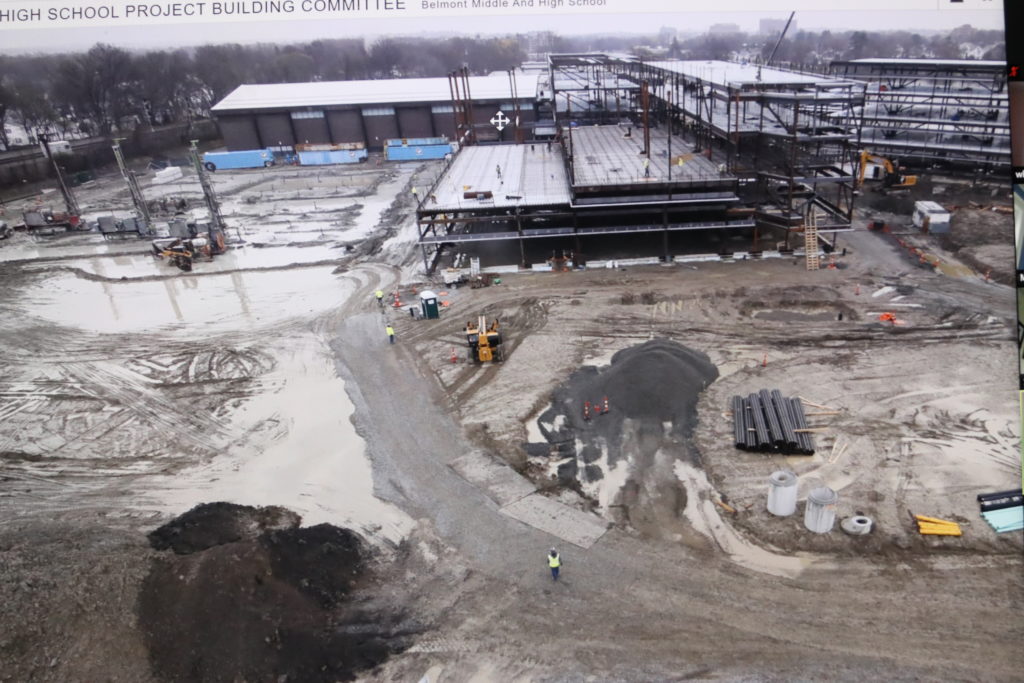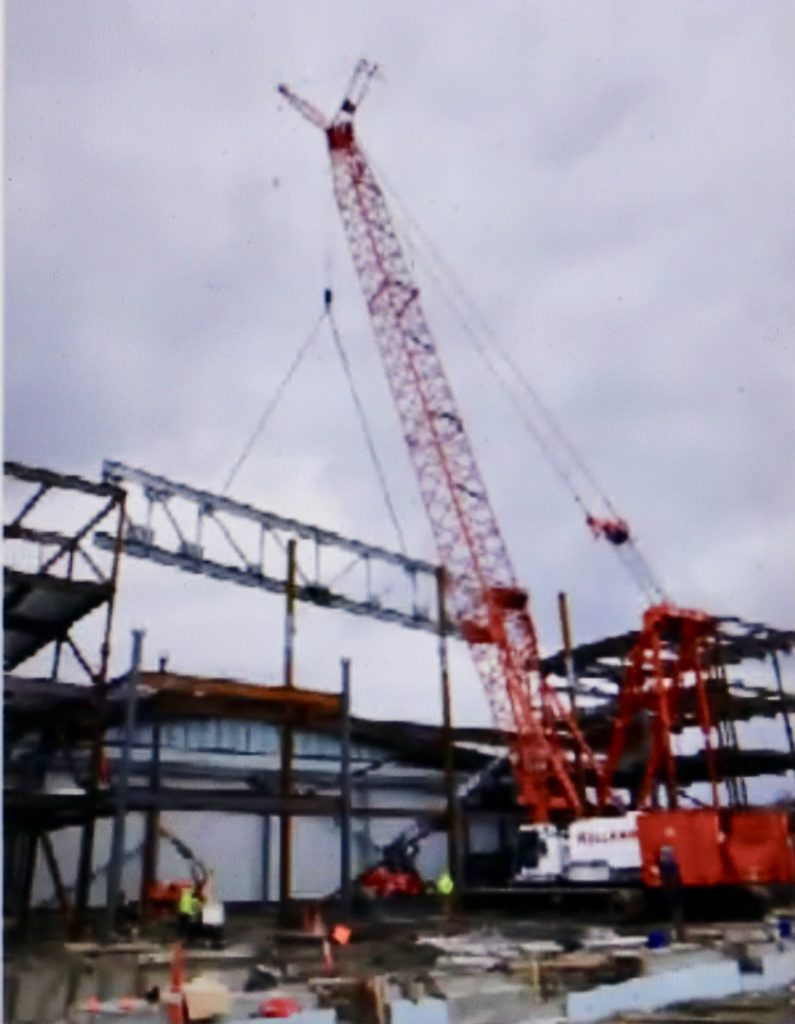Photo:
At its 99th meeting since it first met in 2016, the Belmont Middle and High School Building Committee on Wednesday, May 13 inched closer to realizing a milestone in the construction of the 451,575 sq.-ft. project as it closes in on finalizing the project’s Guaranteed Maximum Price.
With all the actual bids received by the general contractor, Skanska, and through the oversight of the project by the board (which included a series of value engineering exercises earlier in the process by the building committee to balance the preliminary budgets) the project is at the point where the committee can compare this actual cost of the project against the initial estimated price tag.
The final price of the project is comprised of the bids received, the amount of contingency used, and agreed upon general conditions/fee. Under the GMP, Skanska is compensated for all actual costs incurred from the first day of construction – actually some costs before then – onward.
Going forward, Skanska is responsible for all cost overruns, unless the GMP is increased via formal “change orders” that alters the scope of the project. To reduce their risk and cover any unforeseen costs, Skanska has a contingency fee built into the budget.
And the GMP is darn close to the original price tag for the project. Initially pegged at $238,619,850 – this figure has been revised slightly upwards with allowed transfers of preconstruction costs – after all the steel, cement, rebar wire and thousands of other material and services have been cited and reviewed, the project’s GMP has come in at $240,041,815.
And while the discrepancy results in an overage of $1,421,335, Building Committee Chair William Lovallo told the committee having the GMP coming within a half of a percent of the original estimate on a project this large was commendable.
“I think we did a darn good job,” he said, although admitting $1.4 million “is still a big number.”
Three options facing the committee
While the committee member will be digesting the facts and figures over the weekend – a final approval will come at Wednesday’s May 20 virtual meeting – Lovallo said the once the committee OKs the $240.0 million GMP, it has three options to reconcile the deficit:
- Approve the GMP and resolve the deficit using the contractor’s contingency fund, currently at $16 million.
- Ask Skanska to find a way to come up with $1.4 million in cost savings, and
- Enter into a third round of value engineering that requires reopening the expenses column and cutting items that are ready to be added to the building.
While there was some give and take among building committee members on what could be crossed out at this late time – the most focus was on the artificial turf “rugby” field at $700,000, it became apparent that most members were not amiable to revisiting the process.
“We have gone painstakingly through the [value engineering] process and … determined what we placed high value on and made decisions about it,” said Steve Dorrance, the town’s director of facilities, who asked that a straw poll on members preference be taken. It soon became evident the committee members clearly favored using the contingency account and be done with it.
Lovallo told the members they “shouldn’t beat itself up” if it decided to go the contingency route as the contractor and committee have been frugal using the account.
But despite the silver lining around the GMP process, the dark cloud of the coronavirus pandemic has the potential of floating over the project. While the project still has a “substantial amount of money left” in its contingency funds – totaling roughly $18.5 million if you include the owners account and other smaller line items – Lovallo said that money could be seen as quite small if COVID-19 makes a substantial return in the fall or winter.
In a worse case scenario of a major resurgence that forces the closure of the building site or reduce the number of workers on the site to 25 would likely result in millions in incremental costs to the project. Lovallo said that similar sized projects in the Boston area have experienced losses in “seven figures.”
At that point, Belmont would have to really reconsider the project. I don’t see how [the town] would want to be supporting 10s of millions of dollars in COVID costs. It just doesn’t make any sense,” said Lovallo.
“There’s a big discussion we have to have and understand what the options ared of maybe shutting a job down and starting up when work can be a lot more efficient than just pumping millions of dollars into it … just to keep it going.”


